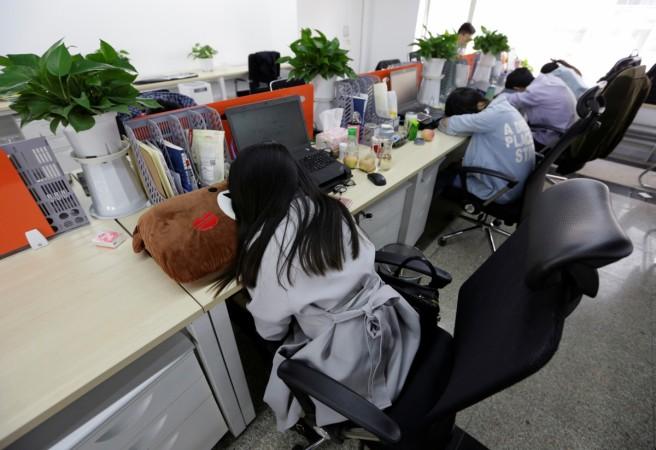
If you are one of those people who often feel drowsy after lunch and wish you could just get a few minutes of shut-eye, here's some good news. While sleeping at work has until now been considered a sign of being lazy and inefficient, the trend of power naps is fast catching on with companies like Facebook and Google encouraging their employees to take naps.
Facebook and Google both have pods in their campus, where employees can take a nap. In fact, Tim Herrera of the New York Times has also spoken about how one should take a nap at work and says that he himself has done it. He explains that in the last two weeks, he has taken three naps at work and adds: "I couldn't feel better about it, and my productivity reflects it, too."
Napping is said to have numerous health benefits such as easing mental stress, improving immunity, helping one feel refreshed and improving one's mood and emotional state. All this, in turn, is known to boost an employee's productivity.
"The truth is, I predict in the next few years nap rooms are going to be as universal as conference rooms because the science now is conclusive about the value of napping," Business Insider quoted Arianna Huffington, author, columnist and businesswoman, as saying.
"Do you want exhausted employees being exhausted during the day, or do you want them to go have a 20-minute nap and literally have another day ahead of them? Because that's how restorative a nap is."

While the trend is becoming more and more popular each day with experts believing that nap rooms may soon be a norm, napping employees is a common sight in Japan. In fact, sleeping at work is considered a sign of dedication and could mean that the employee is exhausted from working late.
Termed "inemuri," which translates to "sleeping while present," it is a common trend among senior employees. The practice has been prevalent in the country for about 1,000 years and people are often seen napping even in restaurants, departmental stores, parks and even during commute.


!['Kaise ho bhai..': PM Modi shook hands with Akshay Kumar at a media summit in Delhi [Watch] 'Kaise ho bhai..': PM Modi shook hands with Akshay Kumar at a media summit in Delhi [Watch]](https://data1.ibtimes.co.in/en/full/806317/kaise-ho-bhai-pm-modi-shook-hands-akshay-kumar-media-summit-delhi-watch.jpg?w=220&h=135&l=50&t=40)


!['Kaise ho bhai..': PM Modi shook hands with Akshay Kumar at a media summit in Delhi [Watch]](https://data1.ibtimes.co.in/en/full/806317/kaise-ho-bhai-pm-modi-shook-hands-akshay-kumar-media-summit-delhi-watch.jpg?w=220&h=138)


!['Kaise ho bhai..': PM Modi shook hands with Akshay Kumar at a media summit in Delhi [Watch]](https://data1.ibtimes.co.in/en/full/806317/kaise-ho-bhai-pm-modi-shook-hands-akshay-kumar-media-summit-delhi-watch.jpg?w=220&h=135)


